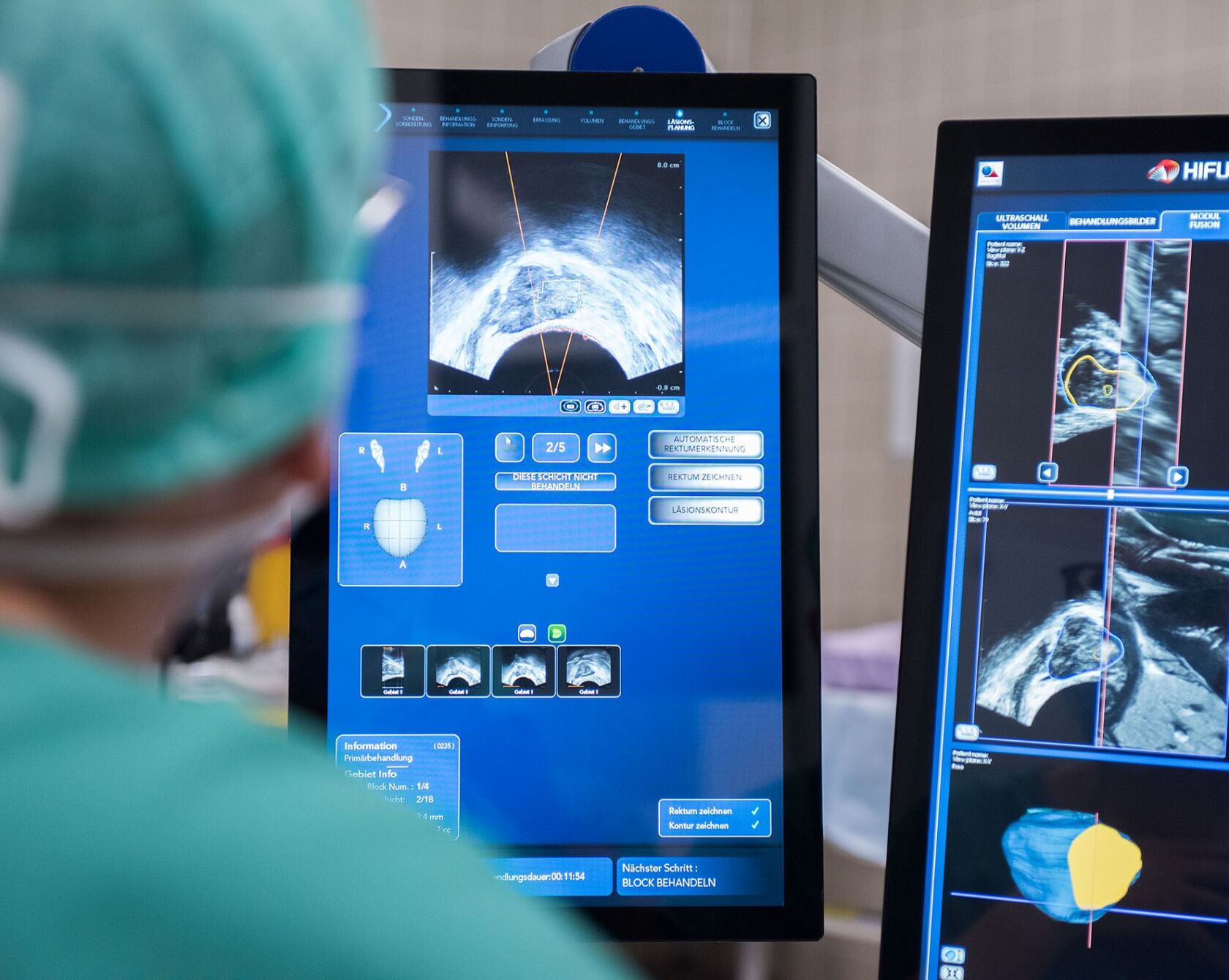High-intensity focused ultrasound (HIFU) has established itself as a gentle alternative therapy for the treatment of localized prostate cancer. A study by the Department of Urology at the USZ has now evaluated how patients are doing three years after their HIFU procedure.
In recent years, HIFU (high-intensity focused ultrasound) has developed as a gentle treatment method for localized prostate cancer. With HIFU, the prostate is preserved as a functioning organ and the tumor is destroyed in a targeted manner – without surgery and with a reduced risk of side effects such as incontinence and impotence.
From the experimental method to the therapy standard
HIFU has been offered at the Department of Urology at the USZ since 2014. Until recently, the use of this innovative cancer therapy was only possible as part of a trial, as the treatment was still relatively new and the data basis was insufficient. That has changed. HIFU is now used as standard in many clinics worldwide and at the USZ, and thanks to ongoing research, knowledge about the long-term success of the therapy has increased. Since July 2023, HIFU therapy for localized prostate cancer has been recognized by Swiss health insurance companies and is covered by basic insurance.
New research results on the long-term effect
Since the first application of HIFU at the USZ, the Department of Urology has continuously analyzed data on the physical and psychological well-being of treated prostate cancer patients. This research is important for quality control and improvement of the method, especially with regard to the selection of patients for whom HIFU therapy is best suited and for the optimization of follow-up examinations. In a study, the Department of Urology has now analyzed and published data on the healing of the cancer and on the functions often affected by prostate therapies, such as sexual ability and continence of patients three years after HIFU therapy. A total of 91 patients took part in the study.
Half are still cancer-free after three years
The analysis of the data over the entire period showed that half of the study participants were cancer-free three years after HIFU treatment. In the remaining 50 percent, tumors were found again according to the strict criteria of the study, but only 15 of these patients had to undergo radical prostate removal. No study participant died as a result of their prostate cancer.
Maintaining bladder control with HIFU treatment
Patients were given a questionnaire to assess their sexual and continence function before HIFU treatment and at various times afterwards. Urinary control has hardly deteriorated and three years after HIFU was on average as it was before the cancer treatment. The average ability to achieve an erection decreased after the procedure – sexual function deteriorated in 17 out of 80 patients. These results also correspond to other studies that show that HIFU therapy is gentler compared to therapies that affect the entire prostate.
Safe follow-up with biopsy
For the first time in a HIFU study, detailed biopsies (tissue samples) of the prostate were taken at regular intervals after the procedure to monitor for cancer recurrence. In addition, the patients’ PSA levels were checked and the prostate was imaged using magnetic resonance imaging (MRI). Biopsy proved to be the more reliable method of monitoring the disease compared to PSA and MRI.
In 81 percent of cases, the prostate could be preserved
“The results show that HIFU therapy produces very good treatment results and is particularly effective at preserving function,” says Daniel Eberli, Director of the Department of Urology. “The oncological treatment success is also remarkable: in 81 percent of patients, it was possible to avoid radical treatment with prostate removal, which is associated with a somewhat greater risk of functional impairment.”
All treatments remain possible even after HIFU therapy
If patients opt for HIFU therapy, they are always monitored very closely after the procedure. If the cancer returns and another therapy such as radical removal of the prostate or radiotherapy is necessary, this is still possible. A previous HIFU enables both a repeat HIFU treatment and other standard therapies without any disadvantages for the patient.
Although HIFU therapy has now become established, Daniel Eberli believes that research into it has not been exhausted. The next steps are clear to him: “Based on our results, we should now look for the best strategy in research to follow up HIFU patients safely after treatment.”
PublicationHIFU - gentle and local
HIFU (High-Intensity Focused Ultrasound) is a non-invasive treatment method for the treatment of localized prostate cancer. High-energy sound waves are directed specifically at the prostate; the sound waves generate heat and destroy the tumor tissue while sparing the surrounding healthy tissue. The prostate remains intact as an organ. HIFU requires no incisions, forms no scars and patients recover more quickly compared to conventional surgical procedures. In addition, fewer patients suffer from impotence and incontinence after the procedure.

